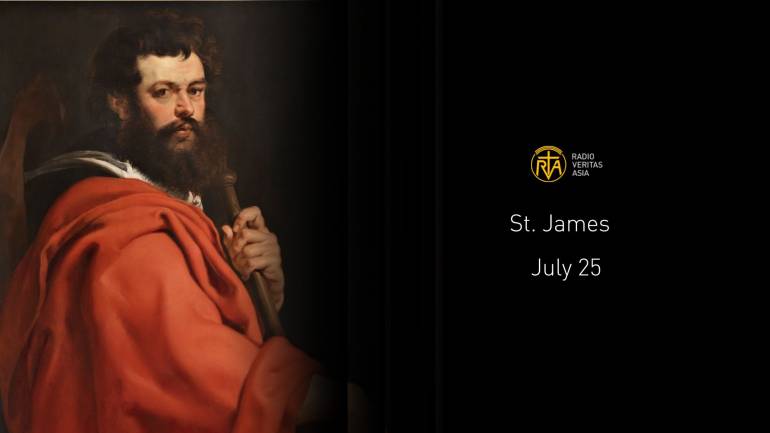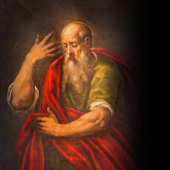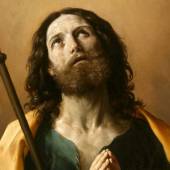Killed in Jerusalem, Buried in Spain? The Mystery Surrounding the Death of St. James

On July 25, the Church celebrates the feast of St. James the Greater, one of the original twelve apostles of Jesus. Known for his fiery spirit and missionary zeal, James is the patron of pilgrims and of Spain.
His life continues to inspire millions around the world, especially those who walk the famed Camino de Santiago in his honor.
Though little is known about his early years, James was born in Bethsaida, a village in Galilee in what is now modern-day Israel. He was the son of Zebedee and the brother of John, another apostle. Together, the two worked as fishermen until they were called by Jesus on the shores of the Sea of Galilee.
To distinguish him from the other apostle named James known as James the Less he is referred to as James the Greater,likely due to his prominent role among the apostles. James was one of the three closest companions of Jesus. Along with Peter and John, he witnessed key moments such as the Transfiguration on Mount Tabor, the raising of Jairus’ daughter, and Jesus’ agony in the Garden of Gethsemane.
In the Gospel of Mark (3:17), Jesus nicknamed James and his brother John “Boanerges,” meaning “sons of thunder” a reflection of their passionate and intense nature. Their zealous hearts made them leaders in the early Church and bold proclaimers of the Gospel.
After the Ascension of Jesus, tradition holds that James journeyed west to the Iberian Peninsula (modern-day Spain) to preach the Gospel. His mission in Zaragoza was difficult, with little success at first. Discouraged, James prayed and according to tradition, the Blessed Virgin Mary appeared to him, standing on a pillar of marble. She encouraged him to persevere and asked him to build a church on that site, which he did. Today, that site is home to the Basilica of Our Lady of the Pillar, a major Marian shrine in Spain.
Eventually, James returned to Jerusalem. Around 44 AD, during a wave of persecution under King Herod Agrippa I, James was beheaded, becoming the first apostle to be martyred (Acts 12:1–2).
How Did St. James End Up in Spain?
The Mystery of Santiago de Compostela
What happened after James’ martyrdom in Jerusalem is where history, tradition, and mystery converge. According to one tradition, after St. James was martyred, his disciples secretly transported his body back to Spain, the land where he had once preached.
A different legend offers a more miraculous account: following his execution, James’ followers placed his body in a stone boat and set it adrift in the Mediterranean Sea. Guided by angels, the boat is said to have crossed the seas and arrived safely on the Galician coast of northwestern Spain.
James was buried in secret, and his tomb was forgotten for centuries until the ninth century, when an astonishing discovery revived his story.
Around 813 AD, a hermit named Pelayo, while praying in the forests near Libredón, saw a strange bright light in the sky, like a star, shining down on a particular field. He followed the light and discovered a hidden tomb containing the decapitated remains of a man. Convinced of its holiness, Pelayo informed the local bishop, Theodomir of Iria Flavia.
After visiting the site and examining the remains, the bishop declared that the tomb was that of St. James the Greater. The location soon became a major pilgrimage destination, with word spreading across Christian Europe.
The city that arose around the tomb was named Santiago de Compostela. The name comes from the Latin Sanctus Iacobus (Saint James) and Compostela, likely derived from Campus Stellae, meaning “Field of Stars” a reference to the miraculous light that revealed the tomb.
The scallop shell, often found on Galician beaches, became the symbol of the pilgrimage. Today, it is worn by pilgrims who walk the Camino de Santiago, a spiritual journey that leads to James’ resting place.
St. James was officially declared the patron saint of Spain, and Pope Alexander VI later recognized Santiago de Compostela as one of the three great pilgrimage sites of Christendom, alongside Rome and Jerusalem.
Pilgrim Apostle for Our Time
St. James’ life and legacy offer a profound model of discipleship, courage, and missionary zeal. From his fiery beginnings as a “son of thunder” to his quiet tomb beneath a Galician field, James teaches us that holiness often requires both bold action and patient endurance.
As we celebrate his feast, we are reminded that the Christian journey is a pilgrimage one that sometimes leads through mystery and suffering, but always toward deeper communion with Christ. May we, like St. James the Greater, be willing to follow wherever the Gospel calls us: whether across oceans, into silence, or through our daily lives of faith.
Radio Veritas Asia (RVA), a media platform of the Catholic Church, aims to share Christ. RVA started in 1969 as a continental Catholic radio station to serve Asian countries in their respective local language, thus earning the tag “the Voice of Asian Christianity.” Responding to the emerging context, RVA embraced media platforms to connect with the global Asian audience via its 21 language websites and various social media platforms.













